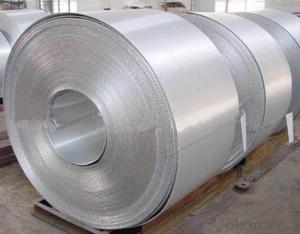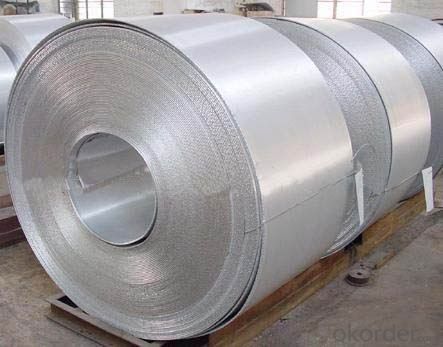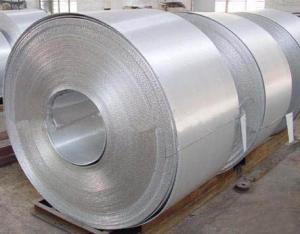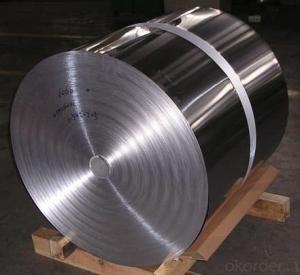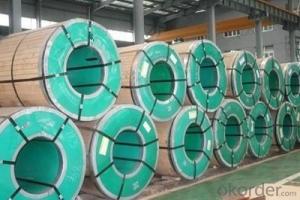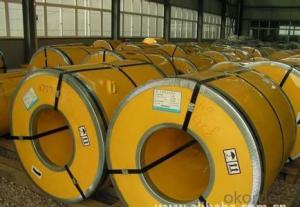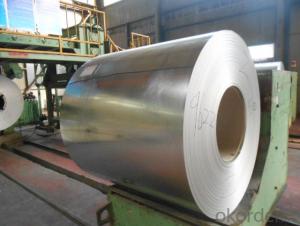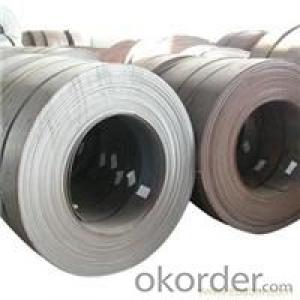Galvalume steel coil with high quality e GL AZ60G-275G Anit-finger or oiled surface
- Loading Port:
- Shanghai
- Payment Terms:
- TT OR LC
- Min Order Qty:
- 25 m.t.
- Supply Capability:
- 100000 m.t./month
OKorder Service Pledge
OKorder Financial Service
You Might Also Like
Quick Details
| Standard: | ASTM, DIN, GB, JIS | Thickness: | 0.3-2.5mm | Place of Origin: | China (Mainland) |
| Brand Name: | CNBM | Type: | Steel Coil | Technique: | Cold Rolled |
| Surface Treatment: | Galvanized | Width: | 914-1250mm | Length: | customized |
Packaging & Delivery
| Packaging Details: | seaworthy packing |
| Delivery Detail: | 20~40 days after receiving desposit |
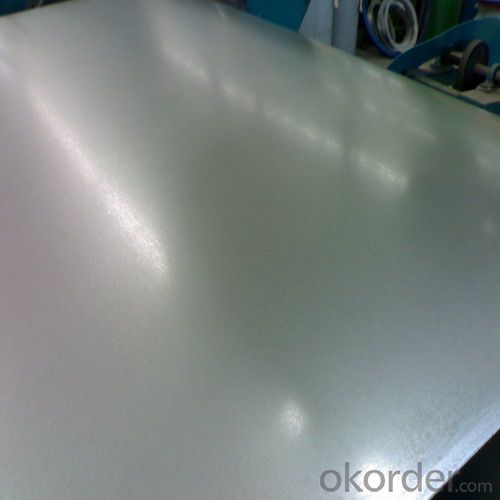
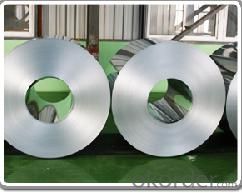
Specifications
galvalume coil with high quality
Thickness:0.3-2.5mm
Width:914-1250mm
AZ50~AZ150
galvalume coil with high quality
(1). Quality Standard: ASTM A792 CS-B SGLCC JIS G3321
(2). Thickness: 0.3-2.5mm
(3). Width: 914-1250mm
(4)Coil ID:508mm/610mm
(5). Coil Weight: 3~15MT
(6)Aluminium zinc layer:AZ50~AZ150G/M²
(7)Surface treatment:passivation treatment,oiling,anti-fingerprint treatment
(8)Packaging:seaworthy packing
- Q: I understand that damascus sword steel was made by folding the strip of steele double , reheating, hammering, folding again and so forth hundreds of times. Was this the same or very nearly the same techmique the japs used making the sword blades the samari swords?(forgive the misspelling)
- The samari swords are made by folding to make many many alternating layers of different steel compositions. Damascus swords were made differently. The steel was heated and forged (like samari swords) but it was not folded. The patterns produced are due to the micro macro-structure of the steel alloy and the way the steel is forged. Fake Damascus steel knives and gun barrels and other items have been made by pattern welding (forge cladding steels with different compositions together) and then folding and forging with some tricks. google damascus steel and you will find lots of info. hope this helps
- Q: How are steel coils used in the production of electrical connectors?
- Steel coils are used in the production of electrical connectors as they provide a strong and durable core component. The coils are wound into the desired shape and size, and then further processed to create the necessary conductive pathways for electrical current. This ensures stability, strength, and efficient conductivity in the connectors, making them suitable for various electrical applications.
- Q: Can steel coils be coated with anti-slip materials?
- Yes, steel coils can be coated with anti-slip materials. These coatings are often applied to improve safety and reduce the risk of accidents when handling or transporting the coils.
- Q: How are steel coils protected against moisture and humidity?
- There are several methods for protecting steel coils from moisture and humidity. One way is by applying a protective coating to the steel surface, which acts as a barrier against moisture. Coatings can be made of different materials, such as paint, zinc, or other substances that resist corrosion. In addition to coatings, steel coils are often wrapped in moisture-resistant materials like plastic or waxed paper. This wrapping provides an extra layer of protection during storage or transportation, preventing moisture from seeping into the coils. Furthermore, steel coils are typically stored in a controlled environment with regulated humidity levels. This helps to minimize the possibility of moisture condensation on the coil's surface. Storage facilities may also use dehumidifiers or other measures to control moisture and maintain optimal conditions. Lastly, proper handling and transport practices are essential for protecting steel coils from moisture and humidity. Special precautions are taken to avoid exposing the coils to rain or excessive humidity during loading, unloading, and transport. By implementing these protective measures, steel coils can be effectively safeguarded against moisture and humidity, reducing the risk of corrosion and preserving their quality and integrity.
- Q: How much do steel coils weigh?
- The weight of steel coils can vary depending on their size and thickness, but on average, they can weigh anywhere from a few hundred pounds to several tons.
- Q: Basically when i'm older, my dream Job would be, to be to start a steel mill, I've always loved the idea of working in Business and investing in things has always been a hobby of mine. i play games where u invest and make money. all i need is some facts about starting a steel mill?What requirements i need,- How time consuming is it,- How easy is it,- How to get started,- The Perks,- The downsides..how much would it cost to start one, like land, place, iron etc, to get started? also i would need a bank loan, how much money will the bank give me ? 80%??
- Typically, steel mills are worth $20 million to $200 million and are owned by large corporations. Your best bet to own one would be to take over a corporation that already has one. That way you have all the supply lines, customers, experts and other workers already there, too. Stick with investing in going concerns, so you don't need to be an expert in each business to build it up. Get them ready made, learn the details from the people already doing it, then work out ways to improve it. Do not get tempted to borrow even 10c from the scammers who have answered your question. Start saving your real money, reading the financial news, and making small real investments in real stocks.
- Q: I saw a 27 sedan and a 27 Pick-up one had wood wheels the other steel, respectively. Witch one was original or were they both original
- Steel wheels were not available on the pickups until 1929. The cars had the options of steel disc or wood spoke wheels in the mid '20's. I'm pretty sure that '27 was the last year the wood wheels were available on passenger cars.
- Q: What are the common methods of slitting or shearing steel coils?
- The common methods of slitting or shearing steel coils include: 1. Rotary Shearing: This method involves using a rotary shear machine that uses a set of rotating blades to cut through the steel coil. The blades move in a circular motion, slicing through the coil to create individual strips of the desired width. 2. Scissor Shearing: Scissor shearing is another common method of cutting steel coils. It involves using a pair of scissor-like blades to make the cuts. The blades are typically operated by hydraulic or mechanical systems, and they cut through the coil by exerting pressure on the material. 3. Slitting: Slitting is a popular method used to cut steel coils into narrower strips. It involves passing the coil through a set of circular blades, known as slitters, which are set at specific distances apart. The slitters cut through the coil, creating multiple narrower strips of the desired width. 4. Guillotine Shearing: Guillotine shearing is a method that uses a large, powerful guillotine machine to cut through the steel coil. The machine features a long blade that moves vertically to shear the coil. This method is often used for thicker steel coils and can produce clean, straight cuts. 5. Laser Cutting: Laser cutting is a more advanced method that uses a high-powered laser beam to cut through steel coils. The laser beam is directed by computer-controlled systems, allowing for precise and accurate cutting. Laser cutting is often used for complex shapes or when high precision is required. Each of these methods has its advantages and is suitable for different applications. Factors such as the thickness of the steel coil, desired strip width, and the level of precision required will determine the most appropriate method to use.
- Q: Monopolistic competition means all of their products are identical like things in supermarket like milk. There are no high barriers to entry. Oil and steel are all same in all industries.
- While oil and steel may seem to be all the same, they are really not. There are many different grades of crude oil and many different types of steel.
- Q: Are steel coils used in appliances manufacturing?
- Yes, steel coils are commonly used in the manufacturing of appliances. They serve as a key component in various appliances such as refrigerators, washing machines, and dryers, providing structural strength and stability to the overall product.
Send your message to us
Galvalume steel coil with high quality e GL AZ60G-275G Anit-finger or oiled surface
- Loading Port:
- Shanghai
- Payment Terms:
- TT OR LC
- Min Order Qty:
- 25 m.t.
- Supply Capability:
- 100000 m.t./month
OKorder Service Pledge
OKorder Financial Service
Similar products
Hot products
Hot Searches
Related keywords
